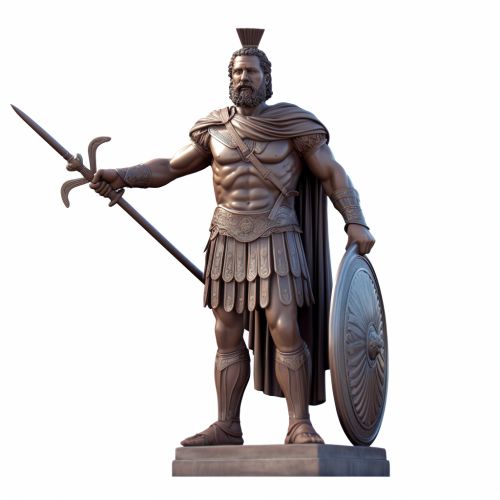Seleucid Empire
Origins
The Seleucid Empire was a Hellenistic state that was established by Seleucus I Nicator following the division of the empire created by Alexander the Great. Seleucus was one of Alexander's generals, known as the Diadochi, who, after Alexander's death in 323 BC, fought amongst themselves for control of his empire. The empire was centered in the near East and at the height of its power included central Anatolia, Persia, the Levant, Mesopotamia, and what is now Kuwait, Afghanistan, and parts of Pakistan and Turkmenistan.
The Rise of Seleucus I Nicator


Seleucus I Nicator, the founder of the Seleucid Empire, was originally a Macedonian nobleman and a general under Alexander the Great. After Alexander's death, Seleucus initially supported Perdiccas, the regent of Alexander's empire, but later allied with others against him in a power struggle that would last for years. Following the death of Perdiccas in 321 BC, Seleucus was appointed as satrap of Babylon in the Partition of Triparadisus. This appointment marked the beginning of Seleucus's rise to power.
Expansion and Consolidation
In the years following his appointment, Seleucus expanded his territories to include much of Alexander's near eastern territories. He waged war against rival Diadochi, including Antigonus Monophthalmus, and by 312 BC, he had regained Babylon. His victories against Antigonus at the Battle of Ipsus in 301 BC and Lysimachus at the Battle of Corupedium in 281 BC, further expanded his empire, making him one of the most powerful of the Diadochi.
Administration and Culture
The Seleucid Empire was characterized by a sophisticated administrative system, with the empire divided into provinces, each overseen by a governor. The empire's capital was initially at Seleucia on the Tigris, later moving to Antioch. The Seleucids adopted Persian administrative practices, and their rule was characterized by a policy of Hellenization, with Greek language and culture promoted throughout the empire. This policy, however, led to tensions with the native populations, particularly the Jews in the province of Judea.
Decline and Fall
The Seleucid Empire began to decline in the 2nd century BC. Internal conflicts, rebellions, and the loss of territories at the hands of the Romans, Parthians, and Armenians weakened the empire. By the 1st century BC, the empire was fragmented and much of its territory lost. The last Seleucid king, Antiochus XIII, was dethroned by the Roman general Pompey in 63 BC, marking the end of the Seleucid Empire.
Legacy
The Seleucid Empire left a lasting legacy in the Near East. The cities founded by the Seleucids, many of which bear the names of the Seleucid kings, became centers of culture and learning. The empire's policy of Hellenization had a profound impact on the region, influencing the development of Greco-Buddhism and Greco-Bactrian Kingdom, and leaving a lasting imprint on the culture and architecture of the Near East.
